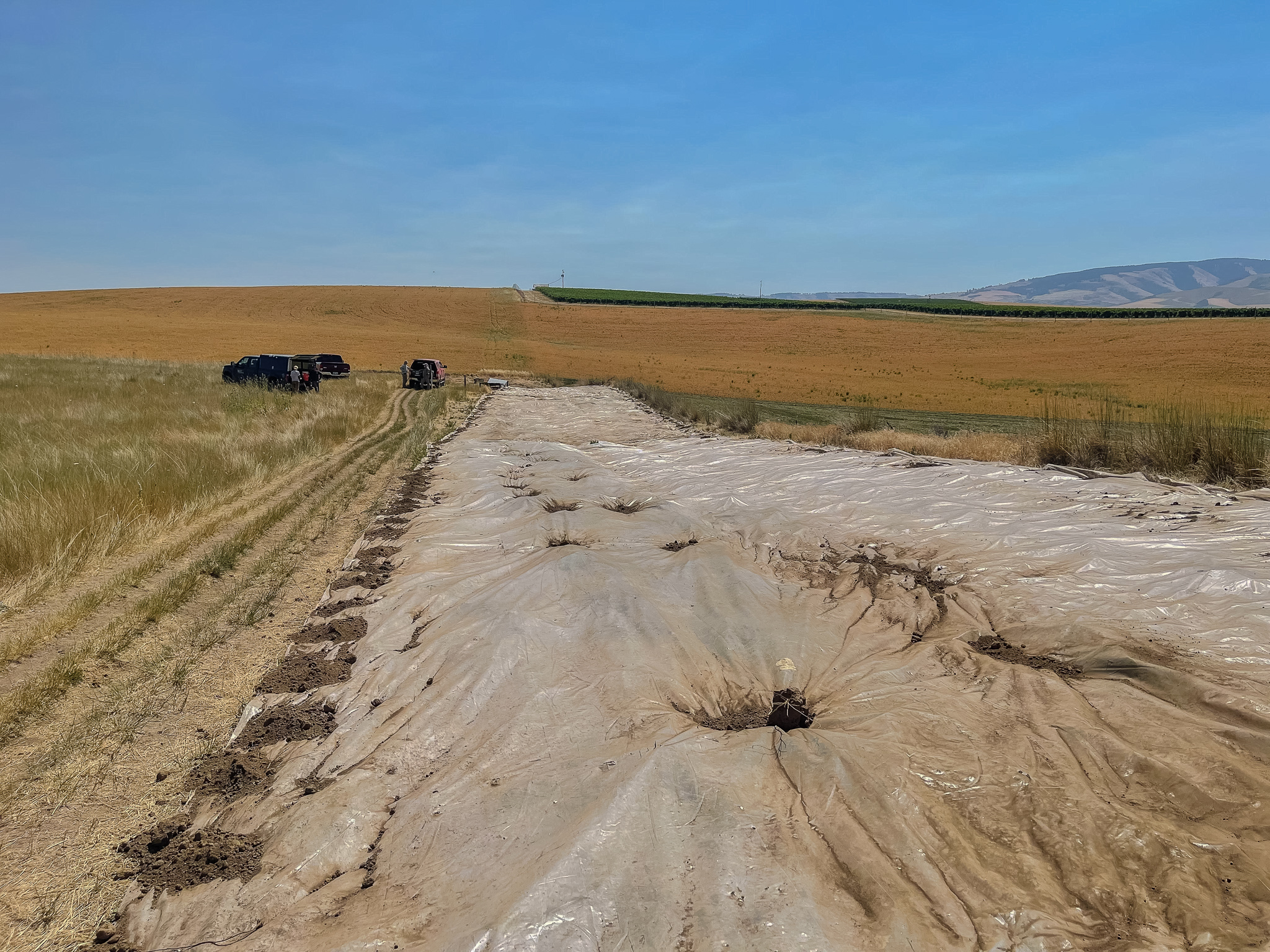Pollinator Plot Preparation at Bennington Lake

In July, Blue Mountain Pheasants Forever (BMPF) Assisted the US Army Corps of Engineers, Mill Creek Project by laying clear plastic tarp along a 300-foot property boundary strip south of Bennington Dam. Employing a technique called “solarization”, the technique uses the sun’s power to control pests, in this case, invasive weeds, by trapping solar energy under the plastic. The heat encourages weed seed germination, and then overheats the sprouts, killing plants before they can establish. The plastic will be left in place for up to two years before removing and drill-seeding native broadleaf plants to promote pollinator insects like bees and butterflies.

The cooperative project was carried out as part of a Memorandum of Understanding (MOU) between the Mill Creek Project and BMPF. The MOU is a non-binding, non-monetary agreement to cooperate to the benefit of both parties on conservation and youth outdoor events. While youth hunts have been held on Mill Creek wildlife lands in the past, the solarization project is the first cooperative conservation effort between BMPF and Mill Creek.
The Mill Creek wildlife lands and Bennington Lake are valuable resources for the Walla Walla Valley, seeing over 350,000 visitors annually. These public land users range from hunters to birders, and otherwise include runners, bikers and hikers traversing the 10 miles of trails around Bennington Lake.

“The solarization project provides a prime opportunity for Pheasants Forever to cooperate with the Corps of Engineers to provide environmental and general public recreation benefits that reach a broad range of public land users” said BMPF Advisory Board Chairman, Brad Trumbo.
As the solarized land strip is ready to be seeded, BMPF will cooperate with the Mill Creek Project to move the tarps to the next contiguous section of property boundary in an attempt to establish native pollinator plants around the property.
